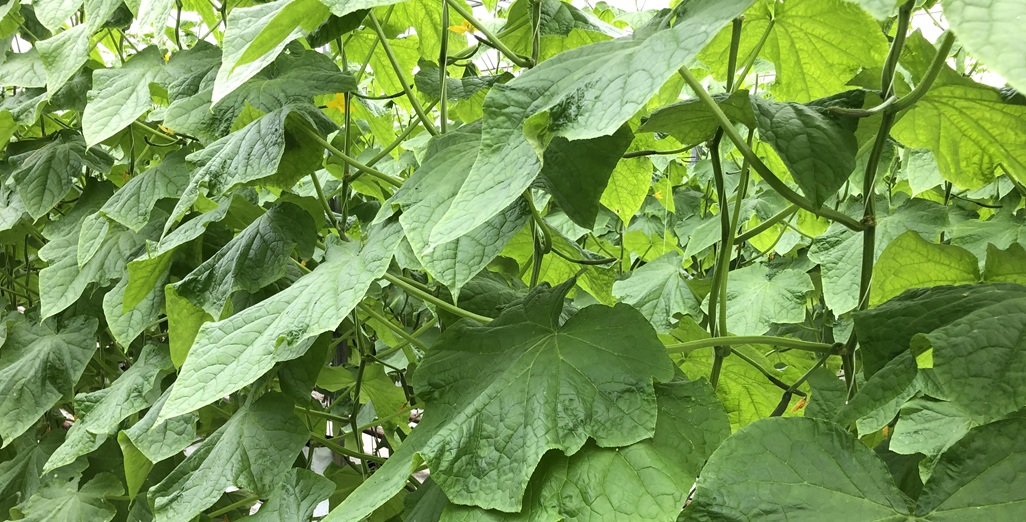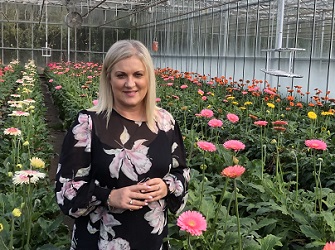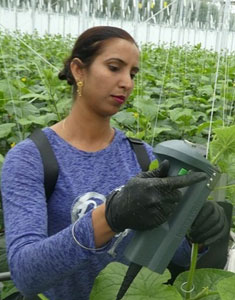Sign up here to subscribe to the Grower2grower Ezine. Every two weeks you will receive new articles, specific to the protected cropping industry, informing you of industry news and events straight to your inbox.
Oct 2023
Global Warming and Horticulture

Mike Nichols is a contributor to Grower2Grower and has written this thought-provoking article.
In 2001 I attended an international symposium on salinity in Pisa, Italy.
I was amazed, however by the topic of the very first paper, which was presented by an Italian meteorologist who spoke on global warming and agriculture. At that time (I and most other people) were of the view that global warming simply meant that temperatures would rise over the years by 1-2 C and that we might then be able to grow tropical crops in sub-tropical regions and might have problems of winter dormancy with deciduous fruit crops. In New Zealand a high-level group of scientists concluded that the major effect would be that the rainfall would increase on the West Coast of both North and South Islands, and that it would be dryer on the East coasts.
I cannot recall any consideration being given to extreme weather events in the New Zealand report, but I can recall that at the Italian symposium, an emphasis was put on the fact that for temperate and sub-tropical regions there would be a trend towards more unstable weather conditions, much more typical of the tropics, and so it has come to pass.
Sadly, I suspect that this year’s weather extremes will be just an example of the future and the frequency of tropical cyclones (and heavy rain events) getting as far south as New Zealand will increase as global temperatures continue to rise. The question is what can we do to reduce the impact of such severe weather events on horticultural production? Clearly one approach will be to reduce global warming, but this must be an international initiative, now underway-and -we are a very small frog in a large pool. The second approach, and the practical one is to change the manner in which we grow our horticultural crops. This is the basis of this article.
Historically most New Zealand towns and cities were developed close to sheltered harbours (eg Lyttleton for Christchurch) or up navigable rivers such as Whanganui. Aotearoa New Zealand is frequently described as the “Land of the long white cloud”. This is likely to be a bad (poor) description of the New Zealand of the future. Perhaps the land of the long black cloud will be a better description. Not economically, or socially but due to the significant increase in dark rain clouds.
The rising temperatures will result in increased water vapour in the air, and inevitable more clouds, and heavier rainfall, when the clouds rise when reaching the land, cool and drop rain. Even without the problem of rising sea levels the river systems may be over-loaded and flooding will occur, and if/when the Antarctic ice shelf melts the oceans could rise. Auckland, Napier, Nelson and Wellington Airports will clearly be at risk.
In New Zealand most cities and towns were established close to a river which provided them with large areas of flat land on the surrounding flood plain. Global warming will have two effects on the fertile flood plains. The increase in the sea level will reduce the ability of the river to drain into the sea, and the extreme weather conditions will make extreme rainfall events more common. There is no way that raising stop banks can prevail, long term.
SO, WHAT DOES THIS MEAN FOR HORTICULTURE?
The solution must be to move the permanent horticultural operations away from the flood plains, and only to use the flood plains for short term /annual crops, interspersed with grassland agriculture.
Of course, horticulture (like agriculture, and forestry) needs rain to survive, but most horticulture will perform best in a low rainfall area where water for irrigation is available. Excessive rain is a problem.
Most of our horticulture (cities and towns) are to be found closely associated with river valleys. The fertile soil being a result of flooding over the centuries. Global warming with higher seas levels and extreme rainfall occurrences will mean that over time cities must either be moved or insulated from flooding. Horticulture will have to move or accept the fact that occasionally they will be flooded. The economics of developing huge stop banks is unlikely to be an option.
Certainly “permanent” horticultural activities such as greenhouses, packing sheds, orchards etc should not use high risk land, but transfer onto land less liable to flood. The fertile river valleys need not, however, be lost to horticulture, but revert back to being used for annual cropping, with the clear risk that crops might be lost occasionally due to flooding.
Of course, moving of fruit production (for example) onto higher ground may involve a less fertile soil, with possibly a poorer climate (more rain and less sun), but this could be overcome by the use of hydroponics and some form of protected cultivation.
For example, Central Otago owes its importance as a stone fruit production area to its low rainfall, high summer temperatures and irrigation systems (thanks to the early gold miners). Global Warming could easily remove this low rainfall advantage. One serious rainfall event during the harvest season could decimate the cherry crop, and severely impact apricots, peaches and nectarines. At least one cherry grower is aware of this type of risk by building a “Cravo” greenhouse, but perhaps the solution is to grow the cherries on dwarfing root stocks (e.g., Gisella), hydroponically in high plastic tunnels? Similar approaches might well be the solution for the other stone fruit, which (of course) poses the question of why not use this methodology to grow stone fruit elsewhere in New Zealand closer to the centres of population?
Wine grapes are generally grown in the river valleys, e.g., Gimblett gravels, and it is unlikely to find any similar site in New Zealand of dry autumns, a quick drying soil and good sunshine. Perhaps we need to change our thinking on wine production. The soil type would not matter if we used hydroponics (clearly not terribly different from the gravels), but ensured by means of a rain shelter (high plastic tunnel) that the vines were kept dry when necessary.
The way we grow apples is changing. When I arrived in New Zealand in 1958 virtually all the fruit trees were grown in a square arrangement 20-foot x 20-foot. Then came the introduction of dwarf root stocks and closer spacing in the rows, moving to the current system of almost 2 dimensional rows.
The next phase could be the use of high plastic tunnels (to keep the rain off (and thus to reduce the need for agrichemicals to control pests and diseases), followed by the introduction of hydroponics, should then mean that any site with reasonable summer sunshine could be suitable.
The berry fruit industry is probably the model to consider for the fruit industry of the future, with an ever-increasing area of production being grown hydroponically under protected cultivation.
Kiwifruit owes much of its success to successful use of genetics and marketing. While the apple industry has changed its production system over the years kiwifruit has tended to retain the canopy approach. Perhaps it is time for a revolution in the manner in which kiwifruit is grown.
The vegetable industry demonstrated this in the 80’s and 90’s when the outdoor market tomato industry in Otaki virtually ceased to exist almost overnight with the establishment of the corporate agribusiness greenhouse tomato developments in Auckland.
Long term I suspect that we will see developments occurring close to the centres of population (both locally and internationally) with the establishment of plant factories (vertical farming) which will enable crops to be grown anywhere and at any time. Once this happens (and electricity prices fall world-wide due to the development of nuclear fusion), then New Zealand (and other southern hemisphere countries) ability to export out of season produce to the Northen Hemisphere could disappear. I know that I would prefer my fruit or vegetables to be locally grown, freshly harvested (tree ripened?), and not be many months old.
The only certainty about the future is that it will involve change.
Mike Nichols
Above a photo of Dr Mike Nichols.
CLASSIFIED
Photo
Gallery
Subscribe to our E-Zine
More
From This Category

Australian Horticulture production value skyrockets to $17 billion

Bayer says Sivanto Prime has a new way of working that targets sucking pests such as aphids, nysius fly and springtails

EPA boosts frontline staff to improve agrichem wait times

Greenleaf Fresh, which traded under the name Greengrower, has gone into voluntary administration.

Oriental fruit fly found in Papatoetoe: response underway






















































